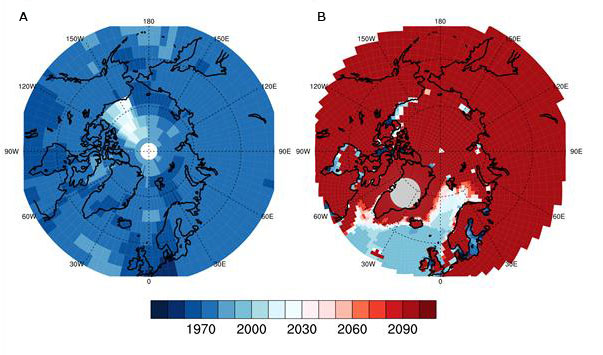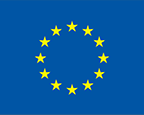Emissions, pathways and modelled impacts of climate change: DDT
Historical usage of DDT in agriculture (1950 to 1990) and in health programmes (1990 to 2010) were used for emission estimations. Other possibly significant sources, such as volatilization from old stocks and illegal production and usage, possibly significant for the Russian Arctic, were neglected owing to a lack of estimates. Only limited information was available from national authorities on DDT emissions except for some information on DDT usage in agriculture and in health programmes, and restrictions on its use, reported to the United Nations Environmental Programme (UNEP; DDT Information system). Based on this information and, in cases of insufficient data, also information on country specific insecticide usage (FAOSTAT; Eurostat), global emissions were estimated within the ArcRisk project. This global DDT emissions inventory showed that about 980 tonnes were emitted in total in the year 2000. As much as 77 percent of the global emissions originated from Asia (mainly India and China). It is expected, however, that emissions from Asia will decline substantially, to a level of 44 percent (of a total of about 430 tonnes) in 2010, leaving Africa as the main emitting region as a source of 56 percent of the global DDT emissions (mainly because of a reduction in usage in China). Because of declining usage in the aforementioned categories, the emissions used are considered to be quite uncertain in both absolute amounts as well as geographical distribution since 1990. Other possibly significant sources, such as volatilization from old stocks and illegal production and usage, possibly significant for the Russian Arctic, were neglected owing to a lack of estimates. It is expected that in some countries DDT will be used for vector-borne disease control in the future.
The global distribution and fate of p,p'-DDT was studied for 1950 to 2100 using the MPI-MCTM model under a model-generated climate that follows the SRES A1B scenario. The results emphasize the increasing role of the ocean in the large-scale distribution and fate of DDT. Volatilization is the main sink for DDT in surface seawater, and because of the earlier peak of emissions, DDT export to the deep sea is ahead of that of PCBs.
The results of the modelling emphasize the role of the ocean for the large-scale distribution and fate of DDT. The significance of the ocean for DDT fate was found to have been increasing over time, but DDT has been evaporation from the ocean, globally, since the 1970s (Stemmler and Lammel, 2009). The year of peak total environmental burden occurred in the past for the mid- and almost all the high northern latitudes, while many other sea regions in low latitudes were still accumulating the contaminant beyond the year 2000. Last to peak in the Arctic are large parts of the Beaufort Sea, where the peak burden of DDT is expected around approximately 2030, see figure a below. Volatilization to the atmosphere is the main sink of DDT in surface seawater. Around the year 2000, all tropical and subtropical ocean waters and the Mediterranean (where reversal happened earliest) as well as the Baltic Sea had turned net-volatilizational. This is not expected throughout the Arctic Ocean before the end of the century, see figure b below. This reversal of air-sea exchange is also governed by export to the deep sea, removal with sinking particles, which counteracts volatilisation upon accumulation in sea water.
 Mapped year of (a) peak total environmental burden and (b) reversal of air-sea exchange of DDT
Mapped year of (a) peak total environmental burden and (b) reversal of air-sea exchange of DDT




















